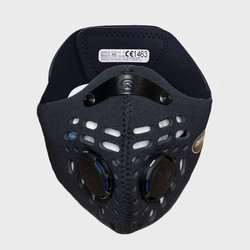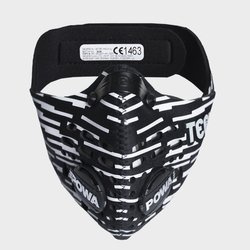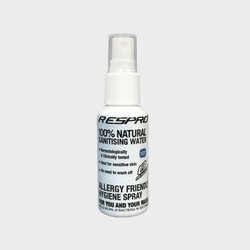Standard EN 149
When purchasing an anti-smog mask, it is worth checking whether the mask in question has a valid EU-Type Examination Certificate (EU-Type Examination Certificate) and a Declaration of Conformity (Declaration of Conformity), as well as being labelled accordingly. Such documents are obliged to be made available by any manufacturer of such goods.
The Declaration of Conformity should be made available in the instruction manual or specified there by indicating a link to a website.
The obtaining of an EU Test Certificate and the issuing of a Declaration of Conformity are subject to a number of technical and formal requirements, the fulfilment of which guarantees an adequate level of protection for the consumer.
In this context, Regulation (EU) No. 2016/425 of the European Parliament and of the Council and Standard EN 149 are relevant.
The former is a regulation concerning so-called individual protection devices describing in particular the formal and technical requirements they must meet. In particular, so-called category III measures, among which are anti-smog masks.
These products must first undergo the appropriate technical tests and then pass the so-called EU type test. In the case of a positive scenario, the result is to obtain an EU Type Test Certificate. Both stages must be performed by accredited institutions with the status of notified body. In Poland, at the time of publication of this material, to the best of our knowledge, there are only 2 such centres in operation:
- Central Institute for Labour Protection in Łódź,
- and the State Register of Shipping (PRS) SA.
Because of the general nature of the Regulation, it is necessary to refer to a standard describing in detail the list of tests, how they are to be carried out and the so-called protection classes during the technical tests.
For anti-smog masks, accredited centres use Standard EN 149 (as of today, this is the version EN 149:2001 + A1:2009 also designated as PN-EN 149+A1:2010).
Particularly the key tests carried out should be mentioned, namely:
-
leakage tests,
-
breathing resistance tests.
During leakage tests, the penetration of the mask using a mist of sodium chloride and paraffin oil and the so-called total internal leakage are checked. In general, these consist of measuring what percentage of particulate matter penetrates the mask. The lower the flow, the higher the protection class.
The resistance tests concern both inhalation and exhalation of air.
In the EN 149 standard, 3 classes of protection are defined: FFP1, FFP2 and the highest FFP3. The allocation of a protection class to a particular anti-smog mask is the result of all tests.
The EN 149 standard also recognises single-use and reusable masks. Reusable masks undergo more stringent tests. Among other things, they are subjected to conditioning before testing. This may include, for example, heating the masks to a high temperature, subjecting them to disinfection, etc.
Certified single-use and reusable masks differ in their designation. The following are examples:
FFP1 R - mask with protection class FFP1 for multiple use,
FFP1 N - mask with protection class FFP1 for single use.
Smog masks sold should have appropriate labelling indicating the protection class.
Respro masks have a protection class of FFP1 R, providing filtration between 80-99.99% and indicating that they are reusable.



